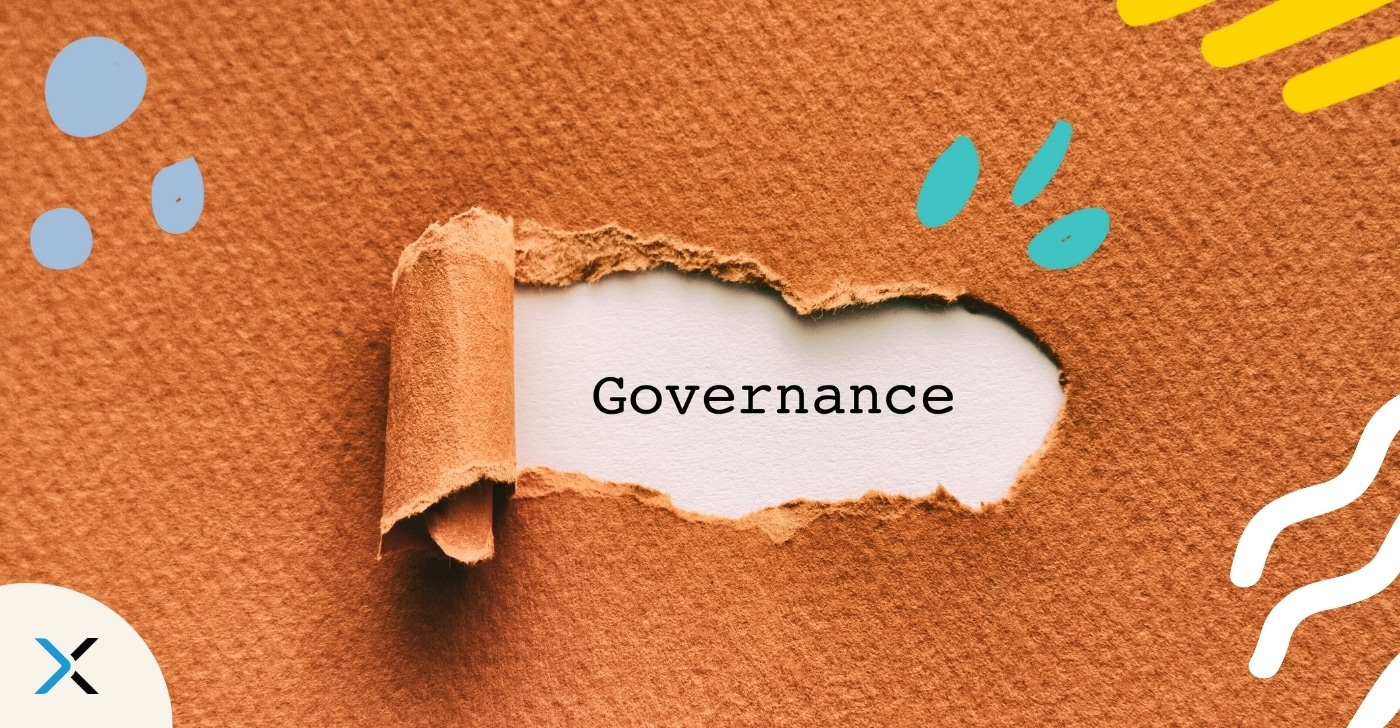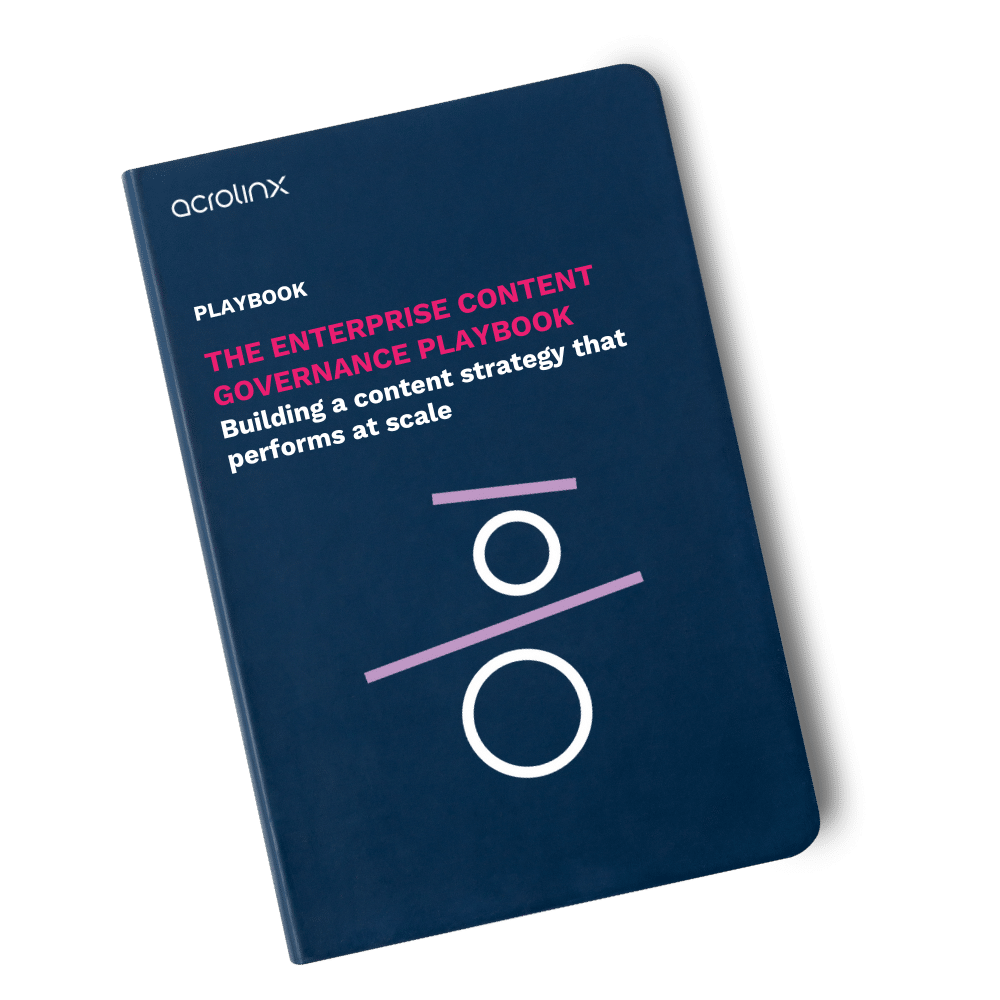
Content governance.
Everyone’s talking about it. But what does it mean? And why is it a “must have” for every enterprise?
Content governance is essential for your business
Content is spreading beyond the company walls: across the web, in social media, in GitHub repositories — and inside your own domains, in knowledge bases, customer service databases, self-service support sites, tech documentation centers, and marketing hubs. Far more people are producing far more (and more kinds) of content that will eventually touch a customer.
And it’s all going global – which means being translated, by humans and machines, to reach more and more markets. Each of these dimensions multiplies the issues that others create. The result is apparent to all: fragmentation, duplication, quality and consistency issues, content silos, cowboy content operations, buyer confusion. And it costs your company a fortune… This is content chaos.
The content boom and the growing need for governance
Content has always been an important part of the customer journey. But with an increasingly digital world, two things have happened: for brands, content has become dramatically easier to produce, publish, and promote. For buyers, content has become far easier to discover, consume, and share.
The collision of unchained supply and unlimited demand has led to an explosion in both content volume and variety. Today, every big company is in the middle of a content big bang: more departments and disciplines are becoming publishers — creating and distributing content to advance their goals. And more people are creating, editing, and publishing — with hundreds or even thousands of content contributors serving a typical global brand (many of them subject matter experts or stakeholders, few of them professional writers).
What is content governance?
| Enterprise content governance is a systematic approach to managing and overseeing your company’s content strategy. It includes capturing and organizing content, measuring its performance, guiding content creation to meet goals, and maintaining its quality and relevance over time. |
It takes the key elements of your content strategy — your goals, priorities, and guidelines — and turns them into actionable content creation workflows, content processes, and metrics.
Defining governance: What does content governance really mean?
The word “governance” has a bad rep. Some of the most ardent advocates of content governance still shy away from using it.
But, in the end, these pioneers understand that governance really is the right word for this hugely important discipline. They also understand that the word’s less welcome connotations (rules, authority, constraints) are outdated.
Today, governance is seen as a value-creating role in a wide range of business contexts, most recently in the booming field of data governance. The trend is clear: governance is what happens when a culture grows up and learns to take care of the things it values.
The leaders in enterprise content governance have shown that a collaborative “Content Center of Excellence” mindset is far more effective than a draconian “command and control” one.
The best content governance initiatives create coaches not police officers. Let’s rescue the G-word!
The goal of a strong content governance model
It’s time to unite all of your company’s content, so it offers a clear and consistent customer experience. That means you need a way to make sure it has the right brand voice and adheres to all your other content standards, no matter who’s written it.
Get it right and your newly efficient, effective, strategic approach to content creation and publication will power big, measurable improvement in customer experience terms, generating a significant uplift in impact across every customer touchpoint. You’ll see the results in the things that matter most: Your marketing metrics, sales conversions, customer satisfaction scores, support effectiveness, product usage, deal sizes, customer lifetime value, loyalty and beyond.
And you’ll see these gains while actually reducing your content costs. Targets like this may be audacious, but they’re also achievable. Which isn’t to say the obstacles aren’t formidable and the headwind isn’t strong (they are).
“Content governance is owning your content. Having the ability to edit, update, archive, publish, unpublish, and eventually change it for the times, all within a really structured set of guardrails.”
Megan Nixon, Senior Content Strategy Manager, Content Operations at Wayfair
Because content strategy plays such an important role in a content governance model, let’s take a short detour.
How content governance relates to content strategy
According to B2B Content Marketing, nearly 80% of B2B marketers report having a content marketing strategy, but only 43% have documented their strategy. That number jumps to 60% among the most successful companies.
The first job of any enterprise content governance initiative is to document the appropriate content strategy — whether it’s for a single department, a set of customer-facing processes, or the entire company.
In fact, content strategy is also often applied at a micro level: to any given web page or app screen. It’s all about documenting the goals of the content, then guiding its creation and deployment to achieve those goals.
“No customer journey is linear. It’s cyclical. It goes from top of funnel, mid funnel, back to the top, maybe to the bottom. Then the customer finds another competitor and goes back to the top. Make sure you’re not building a content strategy in a way where the customer needs to hit each part of the funnel once. And make sure you’re providing the correct information at each of those stages, no matter how many times they revisit.”
Megan Nixon, Senior Content Strategy Manager, Content Operations at Wayfair
Defining your content strategy for effective governance
What’s covered in your strategy will depend on the goals and priorities of your business.
For some, it might include a guideline like, “creating and deploying content that improves the customer experience and accelerates their journey to becoming successful.”
For a heavily regulated business, the content strategy might include a lot about ensuring compliance and avoiding fines.
For a global business, it might include something about maximizing the reach of content by optimizing translation and localization.
There’s no boilerplate content strategy any more than there is for business strategy. One of the only universal principles is that every company wants to be on-brand!
“Best-in-class organizations use documented content strategy plans to drive clarity and alignment throughout the content lifecycle to ensure maximum quality, relevance, and performance.” SiriusDecisions
What to include in your content strategy
Again, the things you choose to include in your strategy will very much reflect your business and your goals.
Dusty DiMercurio, Senior Director of Industry and Portfolio Marketing at Autodesk, includes these five elements:
- Content Frameworks. Like a shared definition of the customer journey; personas; content mix model (called “head, heart, and hands”). In addition to a well-defined content style guide.
- Project Management. Moving towards a common project management approach and toolset, supporting best-practice sharing and process transparency.
- Asset Management. A common asset management system, structured, for instance, according to the customer journey framework, personas, topics, etc.
- Publishing. CMSs, social media platforms, GitHub… again a move towards a common set of publishing platforms.
- Measurement. An agreed set of KPIs; a shared idea of what good looks like.
Whatever you choose to include, enterprise content governance takes up where your content strategy leaves off. Once the strategy is clear, the governance gaps and necessary actions become clear too.
Want to learn more about how to create an awesome content strategy? Check out our eBook for how to create a content strategy for a modern enterprise.
The key benefits of implementing a content governance process
Enterprise content governance doesn’t just pay one dividend, it delivers many benefits across the customer journey and the entire business.
The internal, process benefits alone are significant, helping you:
- Accelerate content velocity by publishing and distributing more content, quicker
- Drive down the cost of content by streamlining production and eliminating any duplication of effort
- Translate more content, more accurately, for less
But these significant process benefits are surpassed by the biggest wins in customer experience:
- Deliver on your content strategy — only publishing content that’s consistent, on-brand, and on-strategy.
- Amplify the impact of your content — making sure every piece does exactly what it’s intended to do: helping your prospects and customers succeed.
- Extend the reach of your content — making it more discoverable and accessible.
- Deliver better, content-driven customer journeys — the big one. Creating consistent, high-quality experiences that will attract, retain, and satisfy customers.
These are huge gains that contribute to every metric that matters in sales, marketing, product marketing, customer service, and customer success. And they pay dividends again and again across your business.
Finally you can turn your content into the high-value, long-life asset it was always meant to be!
Step-by-step guide to implementing content governance
Define roles and responsibilities
Start by forming a dedicated content governance team with representatives from departments like marketing, legal, IT, and compliance. This team will oversee the entire content strategy and ensure it aligns with your company’s objectives. Clearly assign roles within this team, including content creators, reviewers, approvers, and publishers. Each role should have well-defined responsibilities to prevent overlaps and ensure smooth operation.
Accountability is crucial; make sure everyone knows who is responsible for what aspect of content management, from creation through to publication and the updating of legacy content.
Create workflows to streamline your content governance process
Managing the content lifecycle effectively relies on efficient content workflows. Think of it as a seamless content supply chain, just like a manufacturing supply chain. Begin by mapping out the entire content process, detailing each step from ideation and creation to review and publication. Identify the responsible parties for each step and integrate the necessary tools and platforms. Where possible, automate repetitive tasks such as content review and approvals. Setting clear deadlines for each stage will help maintain a consistent output and ensure alignment with your strategic goals. Well-defined workflows boost efficiency and reduce the kind of errors that pose a compliance risk.
Develop and share guidelines
Developing content guidelines ensures consistency and compliance across the enterprise. Guidelines should cover tone, style, branding, and legal requirements, such as intellectual property and data protection. Also make sure to draft clear content instructions outlining procedures for approval, revision, and management.
The next step is to make this information easily accessible to all relevant teams. Regularly update and review these guidelines and policies to reflect any changes in legal or industry standards. Lastly, consider content governance software that digitizes and makes your guidelines accessible in your teams preferred authoring tool.
Monitor to ensure compliance
Effective content governance prioritizes continuous improvement of enterprise content. Use analytics tools to track content performance against your strategic goals, focusing on metrics such as engagement and compliance with guidelines. Conduct regular audits to ensure content meets governance standards and adheres to any industry regulatory requirements. Address any issues identified during audits promptly to mitigate risks. Listen to and respond to feedback from content users and stakeholders to pinpoint areas for improvement, or use content governance software to schedule automatic checks of your entire content repository. Regular monitoring and feedback collection help refine your content strategy, which keeps it effective and meeting your business goals.
A strong content governance model is key to customer experience
The debate is over. The business world has recognized that the most successful companies in every market are those that deliver the best customer experiences.
These top performers have all discovered the critical role that content plays in their customer journeys. And they’re all getting serious about treating their customer-facing content as the strategic business asset that it is.
How do successful businesses treat strategic assets? They govern them with strategies, guidelines, data, and metrics.
That’s what enterprise content governance is all about: operationalizing and tracking your content strategies to drive improvements in content performance and impact. Well-governed content adds value through the entire customer lifecycle, from first touch to ongoing relationships and loyalty.
Finally, becoming the content governance champion in your organization is a major career opportunity. The leaders who take ownership of this important issue and drive change invariably see their stars rise in their companies. And for good reason. This is important.
Want to start your own content governance revolution today? Download our playbook today to get started, or let’s talk to see how Acrolinx can help.
Frequently asked questions
Strategy defines what and why content is created; governance ensures how it’s maintained, compliant, and consistent. Acrolinx powers governance at scale.
It ensures content meets brand, legal, and audience standards. Acrolinx automates this process across tools and teams.
The use of tech to enforce content quality, compliance, and style across digital channels. Acrolinx leads this space with AI-powered checks and Acrolinx Reporting.
Are you ready to create more content faster?
Schedule a demo to see how content governance and AI guardrails will drastically improve content quality, compliance, and efficiency.

Charlotte Baxter-Read
Lead Marketing Manager at Acrolinx, bringing over three years of experience in content creation, strategic communications, and public relations. She holds a Master’s degree from the John F. Kennedy Institute, at Freie Universität Berlin, and a Bachelor's degree from Royal Holloway, University of London. Charlotte, along with the Acrolinx Marketing Team, won a Silver Stevie Award at the 18th Annual International Business Awards® for Marketing Department of the Year. She's a passionate reader, communicator, and avid traveler in her free time.





